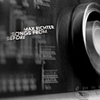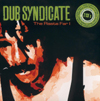- Administrator
- Albums and Singles
KOREA SOUNDBLASTER
GEISHA POP FARM
DOM EK 020 CD
Busan is burning, sushi-monsters roar for food in the distance…Welcome home!
This music has mutated directly from the fires of hell and if you choose to
step inside the secret world of Korea's most enigmatic noise-geishas, you will be
drowned into their catastrophic debacles of sound.
Cataclysmic laughter.
In exactly 33 minutes and 33 seconds your universe will be reduced to
a few grains of dust.
ELISABETH WURST
IM NAMEN DER KLEINKUNST
DOM EK 026 3"CD (limited edition of 100 copies)
Elisabeth went home to look up information on piano tuners' lives in the 1970s and found nothing.
Dieter said, there was plenty of information on the design and construction of Super 8 equipment,
but there was little on people tuning the piano.
Some are married with children, living out in the suburbs. Some are dead.
Then Elfriede came for a visit and things fell into place, but Bauknecht was struck
by a hit-and-run driver on his way home to Café UFO one evening In 1977.
Also available from DOM EK:
HNAS-Abwassermusik CD (DOM 77-16)
HNAS-Melchior CD (DOM 77-17)
HNAS-Küttel im Frost CD (DOM 77-18)
HNAS-Im Schatten CD (DOM 77-19)
HNAS-Book of Dingenskirchen CD (DOM 77-20)
Rowenta/Khan-Sofavision CD (DOM EK 023)
Rowenta/Khan-Avantgarde explosion CD (DOM EK 009)
Rowenta/Khan-Tiefpunkte moderner Tonkomposition CD (DOM EK 012)
Frank Rowenta-Schuss in den Ofen CD (DOM EK 018)
Frank Rowenta-Weingüter CD (DOM EK 022)
Dr. P. Li Khan-Ein Hauch von Höllenlärm CD (DOM EK 014)
Anemonengurt-Wo die Ebenen gegättet sind CD (DOM EK 007)
Anemonengurt-Bocuse Berneau CD (DOM EK 011)
Anemonengurt-Audiozirkus 8cm CD (DOM EK 025)
Korea Soundblaster-same CD (DOM EK 013)
Algebra Suicide-The Secret like crazy LP (DOM EK 001)
Various Artists-Bratenstücke CD (DOM EK 021)
Damenbart-Impressionen '71 CD (Psychedelic Pig 03)
Damenbart-Karma und Gnade 8cm CD (DOM EK 016)
Brigitte & the Hansen experience-Frau Hansen am Bass CD (Psychedelic Pig 04)
Otto Vokal-Systeme 8cm CD (DOM EK 019)
Dieter Bauknecht-Beyond Dorfdisko 8cm CD (DOM EK 010)
Dieter Bauknecht-Quadrophonic girls 8cm CD (DOM EK 017)
Coastal Guard-same 8cm CD (DOM EK 015)
Geisterfahrer-Himmel und Hölle 8cm CD (DOM EK 024)
CDs/LP: Eur 16,- (+postage)
8 cm CDs (limited edition of 100 copies) : Eur 22,- (+postage)
Wholesalers: please contact us!
Read More
- Administrator
- Albums and Singles
 Tom Jenkinson returns as Squarepusher with a cheery and chirpy collection of songs. While the madness that runs through his music is still present, it has taken a backseat to more sedate musicianship. Most of the songs rely more on melody with the chaotic drum rushes and squawks of noise used to punctuate the pieces. While I wouldn’t call it commercial, it does sound like it could be a chance for Jenkinson to emerge a little more into the mainstream.
Tom Jenkinson returns as Squarepusher with a cheery and chirpy collection of songs. While the madness that runs through his music is still present, it has taken a backseat to more sedate musicianship. Most of the songs rely more on melody with the chaotic drum rushes and squawks of noise used to punctuate the pieces. While I wouldn’t call it commercial, it does sound like it could be a chance for Jenkinson to emerge a little more into the mainstream.
Warp
Tom Jenkinson hasn’t abandoned the obtuse drum programming and gobsmackingly impressive bass playing but these Squarepusherisms are used to counterpoint the more accessible song structures. Accessible might be too weak a word, Hello Everything is infectious. Right from the start with “Hello Meow,” there is an upbeat and captivating sound produced. Jenkinson arranges the piece beautifully; it builds up from a simple (by Squarepusher standards) drum beat and adds cheery and bright synthesiser and vibraphones. It is a damn fine piece that captivates all that is great about Squarepusher without relying that much on old tricks.
It’s hard not to smile or dance while listening. Many of the beats on this album actually are possible to dance to without suffering from whiplash afterwards, a novelty for Squarepusher!
Jenkinson explores a wide range of musical avenues throughout the disc. Some of the pieces use hardly any electronic equipment like samplers and synths: “Theme from Sprite,” for example, is a jazzy number that is nearly all “real” instrumentation. Of course the bass features prominently as Jenkinson shows off his skills by starting off simple and finishing with a complex flourish. At the other end of the spectrum there are completely electronic droning soundscapes, the best being the album’s closer “Orient Orange” which sounds like a fifties sci-fi soundtrack but more unnerving and paranoid. As for the rest of the album, it sits somewhere in between these two examples with Jenkinson using various permutations of instruments. It is interesting to hear him play the type of music that I normally associate with all out electronic programming and sampling on normal instruments. For instance, “Circlewave 2” sounds somewhere between Ennio Morricone and Jenkinson’s older material which is a strange but, once I’ve heard it, logical combination.
Early copies of the album come with a bonus 3” CD, Vacuum Tracks. The five pieces included here are all variations on the same spacey sounding synth patterns found on the piece “Vacuum Garden” from the main album. This companion definitely isn’t the best work I’ve heard from Jenkinson. “Vacuum Garden” works well as a single track in the context of the album but a whole EP of alternative versions is excessive. Sure, each version is a bit different to each of the others but there is not enough variety or enough going on within the pieces to warrant so many versions. Still, it’s a bonus and I suppose I can’t gripe about it too much.
Hello Everything wouldn’t be my fave Squarepusher release but it certainly is one of the more enjoyable albums in Jenkinson’s back catalogue. It's easy to listen to yetit still retains the integrity—a hard balance to keep . I’d be surprised, especially with the current media interest in him recently in the UK, if he didn’t see a return to popularity with this album.
samples:
Read More
- Administrator
- Albums and Singles
 The music here is a very hip combination of drones and folk although it doesn’t sound as generic as I feared. There are times when it sounds run-of-the-mill but equally there are times when it’s out there on its own. Nirmala’s talent is evident but, as good as it is, something about his music doesn’t sit right with me.
The music here is a very hip combination of drones and folk although it doesn’t sound as generic as I feared. There are times when it sounds run-of-the-mill but equally there are times when it’s out there on its own. Nirmala’s talent is evident but, as good as it is, something about his music doesn’t sit right with me.
Digitalis Industries
There is a distinctly eastern and exotic quality to the music on Bluster, Cragg, & Awe. There is a universal and old quality to the songs, like the album is an ancestor of modern music. The opening piece, “Nag Clef Seatpoint” exemplifies this with a chorus of echoing voices chanting to the past with bells and drones adding to the atmosphere. It is a wonderful piece. Alas, disappointment comes soon after in the form “Moor Edge Hush,” a dull piece based on a few repeating motifs, mainly a piano line and whistles with glitches and accordions and/or harmoniums drifting in and out. After the attention grabbing “Nag Clef Seatpoint” this piece nearly sent me to sleep.
The rest of Bluster, Cragg, & Awe goes up and down in quality. I found there are two problems with Nirmala. The first is that he sometimes uses very boring sounds that no amount of jigging about in the mix can help. The other is that he sometimes uses very interesting sounds in boring ways. On “The Burning Moon” there is a sample of bagpipes that he processes to smithereens. Sometimes it hits the mark but a lot of the time it takes away the charm from what I think is a smashing instrument that is overlooked far too much. When the album finally gets back on track, I realised something strange: when Nirmala sounds like no one else he is boring but when he sounds like any number of a droning soundscapists he is captivating. While I applaud his adventurousness, I am afraid it rarely does anything for me. One moment where his idiosyncratic style and I agree is on "Faleaflowstreem" which captures the sentiment of floating along a river through an idyllic landscape with its flowing drones and cascades. It's a stunning piece of music.
One thing I enjoy about the album is the sound of the recordings. They sound deliciously low fi. However it doesn’t sound like Nirmala has roughened up the music just for the sake of ambience, instead it sounds like it was recorded using some slightly battered equipment that Nirmala managed to squeeze some nice recordings out of. There is the odd crackle and hiss which makes much of the music sound like it was found in a dusty cupboard and not a project from the last few years. This ancient feeling goes well with the primal music.
Some of the pieces I could come back to again and again but as an album it doesn’t gel. A large chunk could be dropped from the middle and I’d be happy. It’s unfortunate albums like this that make me consider to move with the times and get an MP3 player so when on the move I can just bring the tracks I like. As it is, I find it hard to listen to this album all the way through without skipping tracks. I know there’s talent here but it’s not always clicking with me. It’s a shame but perhaps it will grow on me.
samples:
Read More
- Administrator
- Albums and Singles
 There is an infinite amount of combinations of notes, keys, instrumentation and rhythms to avail of and some bands insist and going down the path well trodden. The Clientele not only go down the path well trodden but pace back and forth on its most worn out section. Strange Geometry is a disappointingly average album.
There is an infinite amount of combinations of notes, keys, instrumentation and rhythms to avail of and some bands insist and going down the path well trodden. The Clientele not only go down the path well trodden but pace back and forth on its most worn out section. Strange Geometry is a disappointingly average album.
Merge Records
Vocalist Alasdair MacLean's singing on this album is fairly desolate sounding. I don't get much feeling from the way he sings, it's more like he's singing like that because by convention that's how a singer in such a song should sound. The Clientele rely too heavily on sounding like bands such as The Byrds and Bob Dylan that they don't sound like themselves. I’m all for paying homage to your influences once you put an original spin on your music. A few times I had to check the sleeve notes to see if they were playing a cover, for example on “Losing Haringey” I was convinced they were covering a Tindersticks song but it turned out to be an original.
The songs themselves are technically well put together. The sound is good and everyone is playing the right note at the right time. It sounds too right though, just like MacLean’s singing there is little passion in the music. There’s also little variation, for instance the same tremolo effect is on the guitar for the entire album. Yes it’s a nice sound but it gets boring after a few songs. Even when they try and freak out they sound like they’re just going through the motions. On “E.M.P.T.Y.” there is what sounds like an aborted guitar solo. It might have had more of an effect if it wasn’t pushed so far back in the mix that it sounds like it’s coming from next door. It's odd because the rest of Strange Geometry is mixed fairly well but to put something that sounded good out of the way seems like madness to me.
The Clientele obviously have talent, they know their instruments and how to get the sounds they want from them. However there is something lacking from the music, they remind me more of a tribute band or an obscure band from back in the day that didn't quite make the big time than a recent band. Strange Geometry does very little for me, it is too bland and sounds like too many albums that I already own.
samples:
Read More
- Administrator
- Albums and Singles
 Like last year’s Mirages, Harmony is further refinement of the charred, static airscape that’s been in steady unveiling since Hecker’s first under his own name. An album of suites, it’s still all the same stuff: a grand-scale drift along the broken strands and injections of melody stretched through a globe’s worth of radio interference and churning chaos-drone. Whereas before the artist disrupted the sweep of his work with pop culture jabs (My Love Is Rotten) or more direct appeals to ambient or field sounds (Haunt Me), his last two records go straight for the head, kept still, buoyant, but in a suffocation of pinging dronal overtones and unending static tide.
Like last year’s Mirages, Harmony is further refinement of the charred, static airscape that’s been in steady unveiling since Hecker’s first under his own name. An album of suites, it’s still all the same stuff: a grand-scale drift along the broken strands and injections of melody stretched through a globe’s worth of radio interference and churning chaos-drone. Whereas before the artist disrupted the sweep of his work with pop culture jabs (My Love Is Rotten) or more direct appeals to ambient or field sounds (Haunt Me), his last two records go straight for the head, kept still, buoyant, but in a suffocation of pinging dronal overtones and unending static tide.
Calm is available in the suspension of droning constants, and in the degree of body separation necessary to appreciate music this reliant on suggestions of spectral energy fields or global transference. But there is nothing inside to lull or comfort. The album title illustrates: a beauteous collision of empty atmosphere shot through with invisible or imagined presences, forgotten surveillance and the remote, mechanical dread of a world locked on "scend." The cover photo, a political memorial dissolving in sepia, establishes the tone well. Track titles like "Stags, Aircraft, Kings and Secretaries," "Radio Spiricom" and "Dungeoneering" emphasize cryptic fusings of interior desolation and loss with atrocities and failed attempts in the public sphere. A tragic world of misdirected melancholy emerges; lonely souls are finding their dead on a radio dial, rapt in code.
Hecker’s goal could be a simultaneous exploration and dismantling of this kind of machine romance. (A previous record, probably my favorite until this, was called Radio Amor.) His technique is certainly one to draw out the minor, thudding melodies from under a static loop, to emphasize the grand cathedral-spaces between shifting panes of white noise. Though not quite comforting, his records do offer a form of mental therapy if only in the way they seem to integrate chaotic, mechanical and modern environmental energies. Like Mirages though, Harmony feels like a tipping point into further interference, alienation from this kind of romance, and an increased emphasis on the paranoia and emptiness in its wake. No soothing microsound, no glitch intricacies or tonal dissections occur here that couldn’t also arrive as quakes to the system; no, Hecker’s music might be better termed "macrosound," a fragment of calm in the glazed, all-seeing eye of something too big to fathom.
Samples can be found here.
Read More
- Administrator
- Albums and Singles
 This record is a resounding success. From the first note, the sound is cavernous, and entombed beneath some of the most mournful orchestration imaginable are musical secrets and recycled sonic treasure.
This record is a resounding success. From the first note, the sound is cavernous, and entombed beneath some of the most mournful orchestration imaginable are musical secrets and recycled sonic treasure.
On Songs From Before, Max Richter utilizes sources between half a decade and three centuries old—some as inspiration, some appearing to be submerged reworkings of his own material, and others are well placed shortwave fragments of morse code, chatter, music, and static. The addition of spoken word to this collage could have resulted in a mess. Luckily, Richter is nothing short of an alchemist, in that, while we admire his genuinely heartbreaking music, the literary content and the pristine production, we can still engage emotionally with the end result. The cello, violin and viola, along with Richter's piano, mixing and producing are deft and evocative. Louisa Fuller, Natalia Bonner, Rick Costa, John Metcalfe, Chris Worsey, and Ian Burdge, assist in creating the equivalent of a blank canvas of taut melancholy, onto which the listener may transpose whatever the mind unearths or the heart exhumes.
The chill processional calm of "Song" begins the album strongly with minimal strings, hollow keys, and sporadic depth-charge percussion. Eventually a wave of understated static heralds a change and we are into "Flowers For Yulia" featuring a voice reading from the work of Haruki Murakami. This is a brilliant choice. The balance of accessiblity and complexity in Murakami's work has been noted, and the same is true of Richter. The choice of reader for the few passages of text is probably the biggest risk on this record. Robert Wyatt's voice has always naturally combined a matter-of-fact sadness with a quizical sense of isolation and cheery humanity. For me, this matches, but doesn't overwhelm the power, ambiguity, or meaning of the verse. I hope the recognition factor of Wyatt's presence won't distract other listeners, and when set against clouds of intricate static, the chance is lessened.
"Fragment" features a liquid-into-crystal piano style that recalls Vladamir Costa's romantic soundtrack for the cult film Diva, and as with any object of obsessive desire, is gone all too suddenly. "Harmonium" begins with static that sounds like rain and more verse. That succumbs to a throbbing, meandering, sense of darkness, illuminated by glistening stalactites of shimmering sound-as-light. More deceptively simple orchestral beauty follows (like that's a piss-easy thing to put in the middle of your album) until "Time Passing" blooms into muted and contrasting percussive explosions combined with shortwave chatter. Later, the discussion of sky in the ultra-short "Lullaby" brings to mind Peter Carey's short story The Puzzling Nature Of Blue.
The tracks I mention aren't highlights. When a disc is as consistently satisfying as this one, there's no such thing. Others may say that Songs From Before is too short, too lush, or not difficult enough. Yet each time I listen to this record I feel I enter a secret place, an attic, cave, or well, and either leave something for safe keeping or discover something of value. Of all Richter's recordings, this one may features the least number of notes, but what notes they are! As Rumpole said, "It's the quality of life, Hilda." Rather affirmingly, a Murakami quote which surfaced in a recent brainwashed review of Guitar Realtime Processing is heard here, on "Time Passing", but the quote I'd perhaps use in reference to this record isn't:
"Haven't sensed the sweet breath of summer for long. The sweetness of the waves. The faraway steam whistle. the touch of girl' skin. the lemon smell of hair conditioner. the evening wind. Faint hope. Summer dream... all disperse bit by bit like the bygone days."
samples:
Read More
- Administrator
- Albums and Singles
 As a household name for anyone who knows his or her electronic music, it’s a surprise that its taken this long for Andrew Weatherall’s to drop his first solo record. Aside from a few remixes and mix records, he’s always been a team player in projects like Sabres of Paradise and Two Lone Swordsmen. Always seen as more of an ideas man than a knob twiddler, this five track EP reveals again his skill for crossing the genre gaps and keeping his vision as eclectic as ever, but this time on his own.
As a household name for anyone who knows his or her electronic music, it’s a surprise that its taken this long for Andrew Weatherall’s to drop his first solo record. Aside from a few remixes and mix records, he’s always been a team player in projects like Sabres of Paradise and Two Lone Swordsmen. Always seen as more of an ideas man than a knob twiddler, this five track EP reveals again his skill for crossing the genre gaps and keeping his vision as eclectic as ever, but this time on his own.
Normally from LP to LP you can rely on Weatherall’s perfidy, his progressions from style-to-style ditching conquered musical territories in his wake. This EP is more of a career roundup than a forward-looking release, but it’s a great spot to spark up a solo discography. Touching on key identifiable points of his past projects (see the silky techno beats on Two Lone Swordsmen sound-alike "Edie 11"), each track here could be a prime cut ready for a best of compilation. But as with all Weatherall projects he’s never yet taken the obvious / easy route. Even the most commercial cut here, a surly track "You Can't do Disco Without a Strat", features an incredibly odd girl group sing-along of the title that sounds utterly out of place and sarcastic. Matched with his half sneer vocals and a melody that wobbles in and out of dancefloor focus, this shows he’s still got that leftfield lean. The bonus remix of this track by UK’s Repeat/Repeat duo takes a minor glitch route through the same track, keeping the moody quotient well in the red. Everything here has that gaping switchblade stab wound twist that seperates Weatherall from just another melodic electronica pioneer.
Sounding like a shinier exploration of mid-career Sabres territory, "La Sirena" is a stilted and sometimes squelchy enormous electro monster. Plucked rockabilly guitar notes ride shotgun alongside a doom dub bass; a compulsory head nodder. It’s instantly Weatherall, bringing back memories of Sabresonic’s urban murk. The nearest touchstone on the opening "Feathers" is a less frenetic New Order, the scratchy guitar, live drums and a big fat Hooky bassline.
After a brief off-radar break it looks like the man is back to claim his spot, not that anyone could ever take it.
samples:
 
Read More
- Administrator
- Albums and Singles
 This reissue of an insanely obscure and rare album by Susan Christie is very welcome. While I don’t pretend to have even heard of her before, I’m glad I’ve heard her now. Paint a Lady is a top quality album; it combines all sorts of styles and influences (but mainly folk) to make a nearly perfect pop album.
This reissue of an insanely obscure and rare album by Susan Christie is very welcome. While I don’t pretend to have even heard of her before, I’m glad I’ve heard her now. Paint a Lady is a top quality album; it combines all sorts of styles and influences (but mainly folk) to make a nearly perfect pop album.
Most of the album is excellent with Christie somewhere between a mysterious and sexy Nancy Sinatra character and a more worldly, truthful Janis Joplin. Her backing band is great: they combine elements of folk and country with psychedelica and funk. Christie’s performance on the first half of the album is spotless. Her voice is beautiful and strong, it commands total attention. On the country standard “Ghost Riders in the Sky,” not only does she give a soulful rendition of the song but her voice is doubled up with an echo added to her words. It is a simple but very effective technique which adds an ethereal quality to the song.
Mid-way through the album is “Yesterday, Where’s my Mind?,” which is easily the weak point of the album. More specifically the first chunk of the song is turgid. The backing band are great, slowly building up a powerful groove but Christie’s spoken word vocals are atrocious flower child waffle about going on acid. However, when she starts repeating the phrase “God, where is my mind?” and snarling like a proto-Jarboe the song is saved. It quickly changes style into a country-tinged rock song. The electric guitar buzzes and growls as Christie unleashes her voice properly. As much as I dislike the intro I’m more than happy to sit through it to get to this.
One word of warning about this album: because of the nature of the source recording the sound gets a bit ropey at some points. In 1970, only three copies of the album were pressed and, although not stated in the press release, I’m guessing the master tapes were lost. This reissue was made from one of the three vinyl copies and in a few places the vinyl is worse for wear. Some of the songs have a lot of scratching on them which at times kill the mood. Still, beggars can’t be choosers.
I’m not a rabid rarity collector, I don’t think that a rare psychedelic album from the '70s or a black metal demo limited to five cassettes is any better than something that gets a huge pressing and fan base. However, I do often wonder how many classic albums have been lost to society. A better Velvet Underground could be in a vault somewhere waiting for someone to stumble across or to be accidentally destroyed. Susan Christie may not be up there with VU but making her music available at long last was worthwhile. Paint a Lady isn’t life changing or ahead of its time but it is a cracking album. A lot of albums that should never have been made have been given proper releases so it’s nice to hear some form of musical justice by getting an album like this released. Paint a Lady is something I will be returning to again and again.
samples:
Read More
- Administrator
- Albums and Singles
 Celebrating the 10th anniversary of Lion and Roots, Style Scott's independent imprint, this double disc release spotlights classics from this long-enduring reggae act and rewards dubwise devotees with unreleased goodies and alternate mixes.
Celebrating the 10th anniversary of Lion and Roots, Style Scott's independent imprint, this double disc release spotlights classics from this long-enduring reggae act and rewards dubwise devotees with unreleased goodies and alternate mixes.samples:
Read More
- Administrator
- Albums and Singles
 This overlooked album by Serge Gainsbourg collaborator Jean-Claude Vannier is as close as composing gets to stream of consciousness. Seemingly dipolar pieces of music have been sandwiched together with deft skill and grace to make an album so rich in sound that ears everywhere will feel like they’ve just had their last meal care of a Michelin star restaurant. It’s rare that the kitchen sink approach to writing music works but Vannier pulls it off in style.
This overlooked album by Serge Gainsbourg collaborator Jean-Claude Vannier is as close as composing gets to stream of consciousness. Seemingly dipolar pieces of music have been sandwiched together with deft skill and grace to make an album so rich in sound that ears everywhere will feel like they’ve just had their last meal care of a Michelin star restaurant. It’s rare that the kitchen sink approach to writing music works but Vannier pulls it off in style.
B-Music
Vannier is best known as the man behind the music on Gainsbourg’s classic Histoire de Melody Nelson. That album is rightly regarded as a masterpiece and very little else of what Gainsbourg recorded reached that level of perfection (although his other works are by no means imperfect). As such, I was surprised upon hearing L’Enfant Assassin des Mouches that it was just as good as Histoire…. This Vannier album could very easily have been included with Histoire… as a double album. The only thing missing from L’Enfant Assassin des Mouches is Gainsbourg’s voice; it always feels like the vocals are just about to kick in but they never do. However, the music alone more than stand up to Gainsbourg’s legacy.
A unexpectedly restrained start with what sounds like a field recording in a sleepy French town on “L’Enfant la Mouche et les Allumettes” gives way to a mighty Krautrock groove; so far, so good. The music never stays the same for long; Vannier makes the music of Fantômas sound positively static. It takes a few listens to get into the feeling of the disc as it seems a bit disjointed at first. He blends styles and instrumentation like no one else; funk rhythms sit comfortably with a choir while what sounds like someone jamming on their guitar to King Crimson playing alongside it all. All this can change suddenly to something completely different like pompous French pop, jazz or all out noise (sometimes all at once). The best part is that with repeated listens small patterns and motifs become apparent that were lost in the chaos previously. It is more adventurous than Histoire… as Vannier is free to do what he wants as opposed to create songs.
As the track titles suggest, L’Enfant Assassin des Mouches is a concept album. Each piece depicts a different scene and it seems to me that the different segments of music within the various pieces represent the cast of the story. Gainsbourg’s contribution to this album is a short summary in the sleeve notes of the action as he imagines it. Vannier changes the mood and setting masterfully, the eastern tinged strings and rhythms of “Le Roi des Mouches et la Confiture de Rouse” capture the sights, sounds and smells of a flamboyant regal feast; Vannier makes music for all the senses. Later the action of “Les Garde Volent au Secours du Roi” provides a dramatic, psychedelic contrast to the earlier party atmosphere. The overblown, epic music isn’t the soundtrack I’d imagine for a child killing flies but it certainly works well.
In addition to the album there are also a couple of bonus tracks in the form of two versions of “Je m’appelle Geraldine” which are superfluous but a nice addition nonetheless. Also included is a video of a live performance of the album’s opening piece recorded for a fashion slot for French television. It’s fantastic to see Vannier’s orchestra play this stuff with a model parading down a catwalk in various costumes, it all fits together beautifully.
Albums like L’Enfant Assassin des Mouches just aren’t made anymore. It sounds firmly rooted in its time and place but it has withstood the tests of time remarkably. It is an inspiring listen that gets more interesting each time I hit play, quelle disque!
samples:
- L'Enfant la Mouche et les Allumettes
- Le Roi des Mouches et la Confiture de Rouse
- Je m'appelle Geraldine (Mid-tempo)
Read More
- Administrator
- Albums and Singles
 In the face of diminishing returns from his midtempo/ downtempo releases for Warp, Ninja Tune, and Planet Mu, Luke Vibert's latest for Rephlex showcases his boldest material this century, suggesting that there may yet be some more good ideas up this maturing musician's rumpled sleeve.
In the face of diminishing returns from his midtempo/ downtempo releases for Warp, Ninja Tune, and Planet Mu, Luke Vibert's latest for Rephlex showcases his boldest material this century, suggesting that there may yet be some more good ideas up this maturing musician's rumpled sleeve.
samples:
Read More

